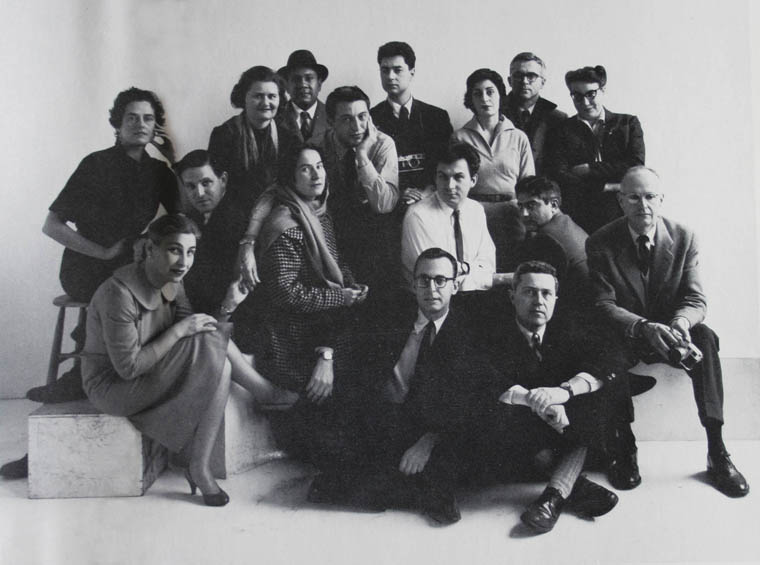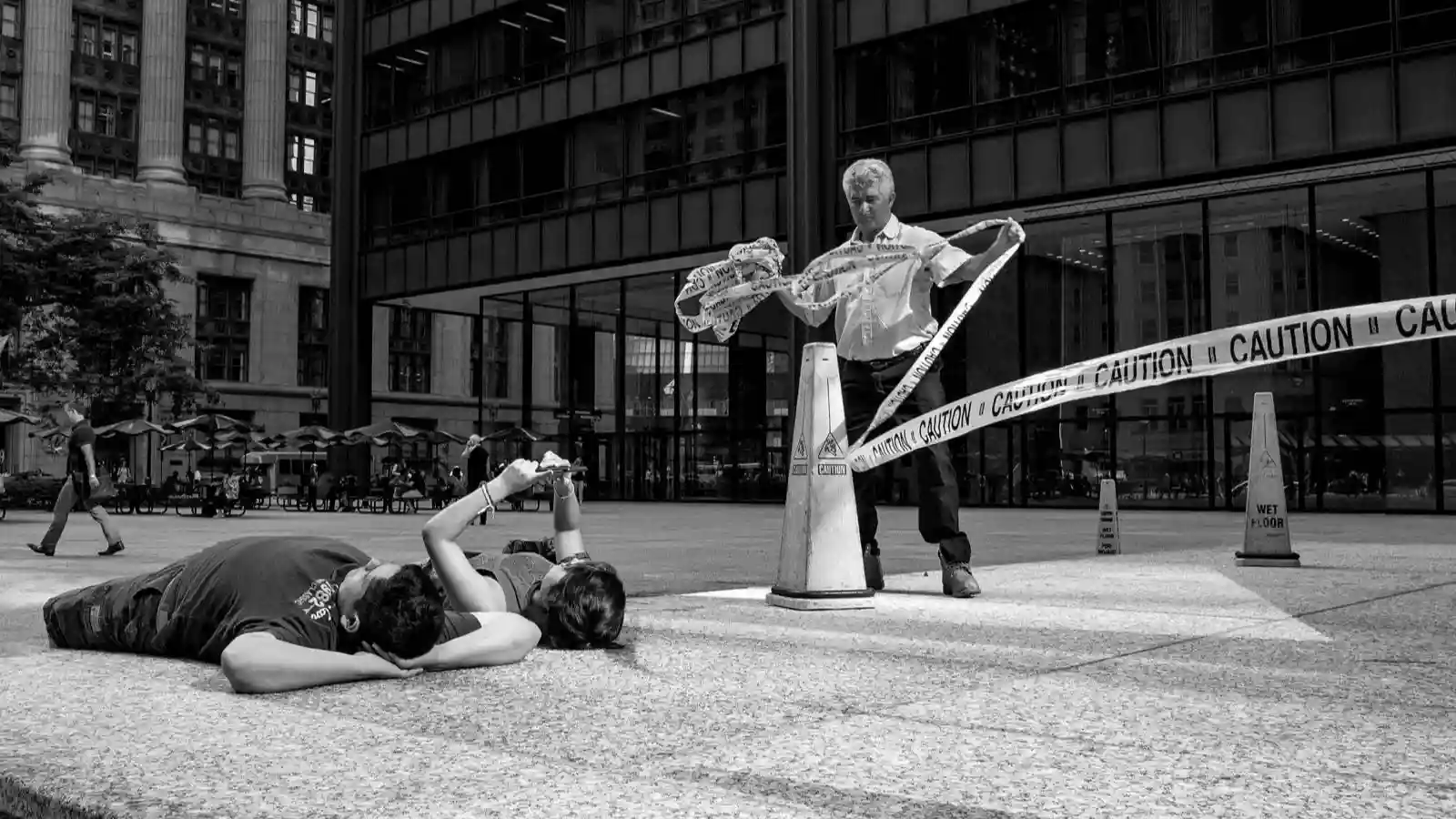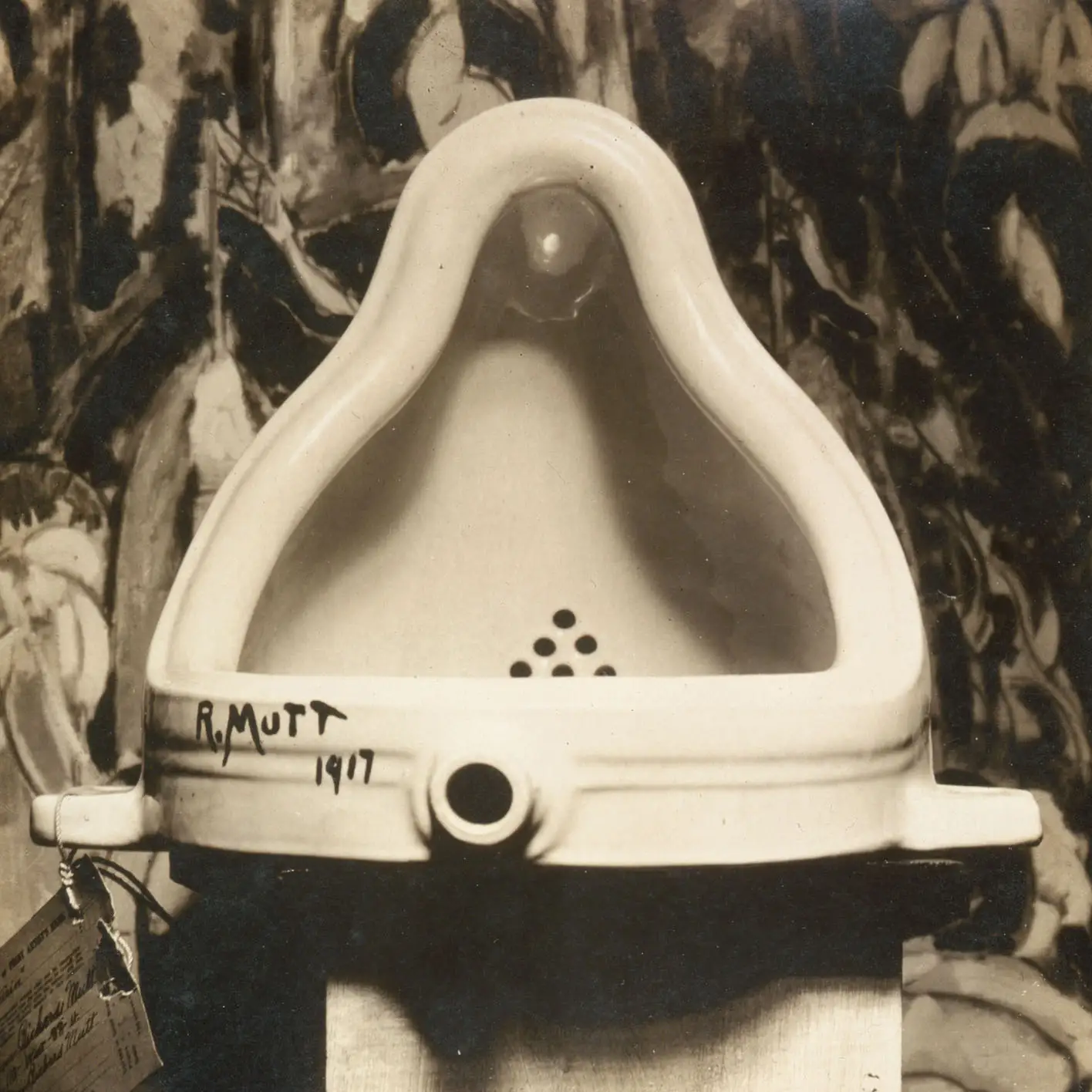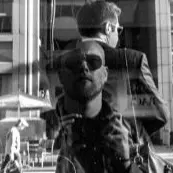Photography
Photographs Tell a Story
A camera is an artistic tool, one I have tried to learn to use to tell stories. In the beginning the stories I wanted to tell were strictly non fiction. Product photos, cityscapes, cat, girlfriend. They were documentary in nature, with a goal of simply having the subject in focus, not too blurry, not too dark or too bright. You would be surprised how long it took me to get good at this, sadly a time span measured in years.
Eventually I realized the story doesn’t have to be real, in fact there are many lucid and insightful arguments that suggest no photograph is simply a representation. That no matter what the subjective nature of the photographer’s gaze, the seemingly technical choices they have made, and the lack of larger context outside the frame of the final image, all conspire to fiction.
I like fiction. As I got better at the technical side of my craft, and figured out what truthful stories I did and did not enjoy exploring. I began to try to find ways to bend light to make the stories more interesting, more surreal. I began to shoot very wide, 21mm became my go to. I started shooting with slow shutter speeds, with flash, at night, in to the sun, from odd angles, from very very close.
Photographic Genres
Street Photography
People have long been my favorite photographic subject. If I take any two of my photos, the one with the person will always draw me in further than the one without. There is a life in it, a connection that a slick image of a sports car will never hold a candle to. That said, street photography is not portrait photography. The city is every bit a part of my photographs as the people. I spent years working on my street photography, and Chicago is such a great place to be a photographer. Don’t get me wrong, its no New York. But if you ask me, living in New York and calling yourself a street photographer is cheating. Fish in a barrel. If you can leave New York, for say Pittsburgh, and come back with even a single fantastic photograph, then my hats off to you. But I have a sneaking suspicion many people with Instagram streams full of New Yorkers doing crazy things would struggle anywhere else.
Street photography got its start in documentary photography, when war photographers and news photographers and journalists needed a hobby for their days off. It documents, it tells a true story, hopefully without being exploitive. Perhaps more than anything else it serves as a wonderful, archeological record. There is nothing so compelling as looking at a street photograph from any number of decades ago.
Black and White
I think black and white photography, whether digital or film, is the best choice for capturing images of people. A photograph should always highlight its subject, and the subject of a street photo is rarely the person in the background that just happens to be wearing red. Black and white photography will capture a person’s soul while leaving the distracting details behind.
Still Life Photography
I mentioned Chicago is a terrible place for landscape photography. But I had an idea one day, what if the picture wasn’t actually of Chicago? What if I crumpled up a piece of paper and took a landscape of a mysterious mountain? What if a prism in water with food coloring and mirrors could become a temple on an alien world? I mentioned spending my childhood drawing, but I did not mention that I also spent a lot of time reading fiction. I loved stories, the more mysterious and fantastical and surreal the better. Alice in Wonderland, HP Lovecraft, and now Simon Stalenhag. What if instead of drawing those places, I could photograph them instead?
Perhaps my abstract, surreal landscape photography is as much experimental photography as it is still life. But however you want to classify it, and whether it is abstract or realism, getting a photograph out of your head as you see it is the kind of challenge that I don’t think you ever solve. What settings to you need to capture a mood? Why does the camera say things like shutter speed and aperture, shouldn’t it have a dial for ‘stark white background headshot’, click ‘moving conflict documentary portrait’, click ‘poppy multi color product photo’, click ‘Instagram worthy inspiring corner with plants hanging over a desk’? Canon is probably working on it.
In the mean time there is plenty to learn about still life photography, whether it be fine art photography, food photography or product photography. I have spent my pandemic time practicing with ink in water, reflective objects, old photographs, vintage items, and even the rain. I even put together a thorough walk through on how to set up a still life photography studio at home.
Equipment
I’d actually love to skip discussing this. But it’s what everyone wants to know. “What gear do I need to take great photos?!”.
Cameras
The camera isn’t that important, until you are trying to achieve very specific things. I personally found that old rangefinders with wide focal lengths and distance scales on the lens are absolutely perfect for street photography for me. I also tend to like very simple user experiences that get out of your way, which has led to some surprisingly expensive purchases (thanks a lot Apple). So after many years I am shooting Leica Monochrom for 35mm digital and a Leica M7 for analog. They share nearly the exact same interface in terms of shooting experience. For “medium format” I use a Hasslebald 907x for digital and a 500C/M for film. So yes, there is a theme. Both tend towards the larger film/sensor size, have the same or similar shooting experiences for digital and film so I can switch back and forth without a huge mental context switch.
I also picked up an Intrepid 4x5 after doing the a wet plate workshop. I haven’t used it yet honestly. At least it wasn’t very expensive.
Lenses
On 35mm film / full frame digital I started with a 50mm Leica lens, then moved to a 35mm Leica lens, and finally to a 21mm Voigtlander lens. You know why I switched to Voigtlander? Because I had already wasted a stupid amount of money on Leica glass I barely used. And you know what? The Voigtlander is functionally every bit as good as the Leicas. If someone tells you otherwise, ask them to show you their pictures. Not pictures of test charts and brick walls and sun flares they found online. Ask them to see their portfolio. I bet they don’t actually shoot, I bet they collect gear and spend their days trying to shame other photographers online. In fact I suggest an exercise for you. Find a dozen photographers whose images you adore, and then go do some research and find out what they shoot. I guarantee it will be every brand and focal length you can think of, probably breaking down more or less by what has had the most sales over the years. It all takes the same pictures, get gear that works for you. Whether that is based on affordability, user experience, ease of finding it. Your uncle wants to hand you his old Canon and a bunch of lenses? Perfect, use that. If you are a sultan, pick up a Phase One.
On my Hasselblad I use a 120mm (90mm equivalent) for my still life work, and an 80mm standard lens for everything else.
Digital vs Film
The great debate rages on.
Digital Photography
This is where I got my start of course, the Canon T3i I mentioned before. You know what is great about digital? Fast, iterative learning. You can go out for a walk, and take 500 images in a hour or two. That sound crazy? I do it every time I shoot street, even now. You can come home, upload them to Lightroom, mark 90% of them for deletion right off the bat. Then with the winnowed down list of 50 or so half decent pictures I start using the star rating system. Anything that gets zero, one or two stars goes next. Finally I’ll have 20ish truly not bad images. Maybe more if I was lucky or don’t feel aggressive in my deletion. Now I can go through them one at a time. Check the settings, look at the light, whats in focus. Make note of what worked and didn’t technically. “Yea, once again I need to remember to keep the shutter speed over 1/125th”, I’ll think or, “God I love it when it’s sunny enough for f/11”. Finally I’ll take the best 5-10 images, do a little light editing (up the exposure, lower the highlights a tad, add a hint of vignetting, etc.) and show them to my wife. Over the years her reaction has gone from, “mmhmm” to “nice” to “Oh wow I love that one!”. Progress.
Film Photography
So if digital is so great, why on earth would you use film? This reminds me a bit about when my close, single friends ask me if it really was worth it having a child? From the outside it just looks like a ton of work, a smelly mess, and a lot less free time. It’s true, for both, but it’s soooo worth it in a way you just can’t truly understand until you do it yourself. I’m referring to film, don’t have kids just to “try it out”.
Developing Your Film At Home
As soon as you get comfortable putting a few rolls of film through your camera, it’s time to develop for yourself. This is 60% of the reason to use film in the first place. The experience is unparalleled. In order to do that you are going to need some supplies.
Darkroom
I actually started in my bathroom with the lights off. I took the film out of the canister, put it on a spool, and shut that in a light tight development canister, then the lights come back on for the rest of the process. I’m going to pretend this went really smoothly the first time, and that it still goes off without a hitch now. Eventually I got a changing bag after that, no more dark bathroom. Honestly, its not that much of an improvement.
Chemicals
Yea, you have to mix up batches yourself. It’s expensive-ish, it smells, its probably toxic, you aren’t supposed to pour it down the drain. But it’s fun. It’s a ritual. You will start to truly enjoy it.
Seeing the Negatives
This is the climax. Seeing the little images, it’s like magic. Of course digital pictures just show up on the back of your camera too, even faster. But every time you pour off the last rinse water and see the negatives in the light its a tiny little miracle. You think film photography cant get any better, and then you print…
Scanning
Technically speaking, this is definitely the way to go. How else are you going to get your images on your website, or rack up little hearts on Instagram?! It’s time consuming, tedious, and doesn’t feel worth it. Every time you have to scan a few rolls you seriously consider going back to digital full time.
Enlarging
Making prints is the answer to scanning. It’s so simple, it was there all along. But this is actually where things are about go terribly wrong for you. Now you need a proper darkroom. Either you tape up your entire bathroom with trash bags every time, or you find a dedicated space. And you’re going to need an enlarger, and they aren’t cheap, but you can find a used one on Craigslist, and now its time to become a lightbulb from the 70s archaeologist, and oh man do I really want to plug this sketchy looking cord in to a live outlet?
Absolutely highly recommended piece of machinery though. Definitely get one. If you already decided you just have to shoot 4x5 (or god forbid 8x10) then buckle up, you’re in for an expensive ride. If not just pick up a Beseler 23c. You can get them used, new, whatever. Super easy to use, built to stand up to student darkrooms. A treat. Of course I have one, just kidding I have a Saunders LPL 4550XL because I’m an idiot.
Paper Development
Magic, pure and simple, basically a religious experience for your garden variety atheist. Hyperbole? Absolutely. If you’ve never done it you’re probably rolling your eyes. If you have, you’re grinning to yourself right now, you know what I’m talking about. Seeing it appear. Holding it in your hands…
Filmomat
So maybe you hung in there with me on my Leica explanation. You bought in to the benefits of the user experience getting out of the way, the ease of switching between film and digital, the advantages of rangefinder and zone focus? I’m not going to get so lucky on this one, you’re about to think I’m a dilettante. I own a Filmomat. You can Google it. I want to defend myself a little bit and say it was back when they were $2k cheaper, which is true, they were new. I bought an experimental, hand made machine to save myself from hand agitating chemicals for 10 minutes per roll of film. It’s ridiculous. It’s great. I love it.
The Craft of Photography
A great photograph may be a work of art, but actually taking photographs is a craft that you can endlessly improve and refine. As a good start I would suggest you just put a lot of rolls through the camera (or just the one SD card will work). But take lots, and lots of pictures. From there, you will want to really start looking at other people’s work. Flickr is fine, 500px is ok, Instagram is largely a waste of time.
Manual Mode
You should absolutely just let your camera do its own thing when you are getting started, but eventually it is time to learn how the thing actually works. A properly exposed image is a science and an art, and a camera is a tool. if you aren’t familiar or comfortable with your camera’s manual mode I put together an easy to follow full guide on shooting in manual mode that you may want to take a look at.
Photography Books
This is where you should spend your time and money. Start at the library, or the book store. Spend hours flipping through every book of photography you can find. Note I didn’t say books ON photography. Feel free to avoid “How to take amazing photos for dummies”, but if you see a Diane Arbus book on the shelf you should stare at it until you see her images with your eyes closed.
Other Photographers
Sure you can and will take many images alone, but honestly I really prefer going out shooting with a friend or two. Even if we split up for a while and meet up at the end for coffee and a debrief, it’s a lot more fun. Aside from shooting, there are a lot of benefits from finding people to talk to more generally. To share tips and tricks, to learn from, to look at your work with an objective eye to help you improve.
Photography Collectives
A collective can provide you with all of the above. Some collectives are snooty, and hard to get into. Some will let anyone in who shows up. There are pros and cons of both, but it is likely that even within a larger group you will find that smaller group of 2-3 people you bond with.
Community Resources
Museums, community darkrooms, galleries, etc.. Take advantage of them all. Seriously. Look at work, as much as possible. Meet and learn from anyone you can. Places like the Art Institute, Chicago Community Darkroom, the Edelman Gallery, and Filter Space here in Chicago are all great resources.
In Person Photo Reviews and Online Photo Contests
This is where truly seeking feedback starts to cross the line in to looking to have your ego stroked. If you go in to any professional feedback situation expecting praise and glory, a gallery to throw themselves at your feet and beg you to show… haha, go ahead in with that exact expectation, I’ll be outside with popcorn waiting to see the utter look of deflation and defeat when you emerge.
Seriously though, these kinds of things of of questionable value. Maybe you will get more professional sounding versions of the advice you have heard from your peers. Likely you will get some great advice on turning your work from one off pieces in to a cohesive collection. Possibly you will meet a gallerist or other person who takes a small interest in you. Don’t expect a show, don’t expect them to follow up, and don’t bug them. Just come back next year with better work, they will remember you. If they want to work with you they will ask you, not the other way around.
Gallery Shows
I don’t have a lot of advice here. I’ve had one, and it was pretty low rent so to speak. It was fun though.
Workshops
I am a workshop junkie. I would go to them all if I had the time, money and patience. Ok, so I’ve been to like 6, but with prices ranging from $100 to $2000, its not an every other weekend kind of deal. Plus you will need some time afterwards for whatever effect its going to have on your shooting to kind of settle in and take root.
Once upon a time I went to some local dude’s workshop with a bunch of retired ladies from the suburbs to learn how to use a camera. I went to Thorsten Overgaard’s workshop to learn about light. I went to Eric Kim’s to learn to invade unsuspecting stranger’s personal space. I went to John Coffer’s wet plate workshop to learn how to become a professional civil war photographer (a skill that might come in handy one of these days). I went to a Phase One sponsored landscape workshop to sneakily use a $45k camera for street photography.
Conclusion
There is no conclusion. Photography is a life long learning process, a hobby that never gets old, and something no one has ever completely mastered. If you’ve been bitten by the bug there is no help for you.



